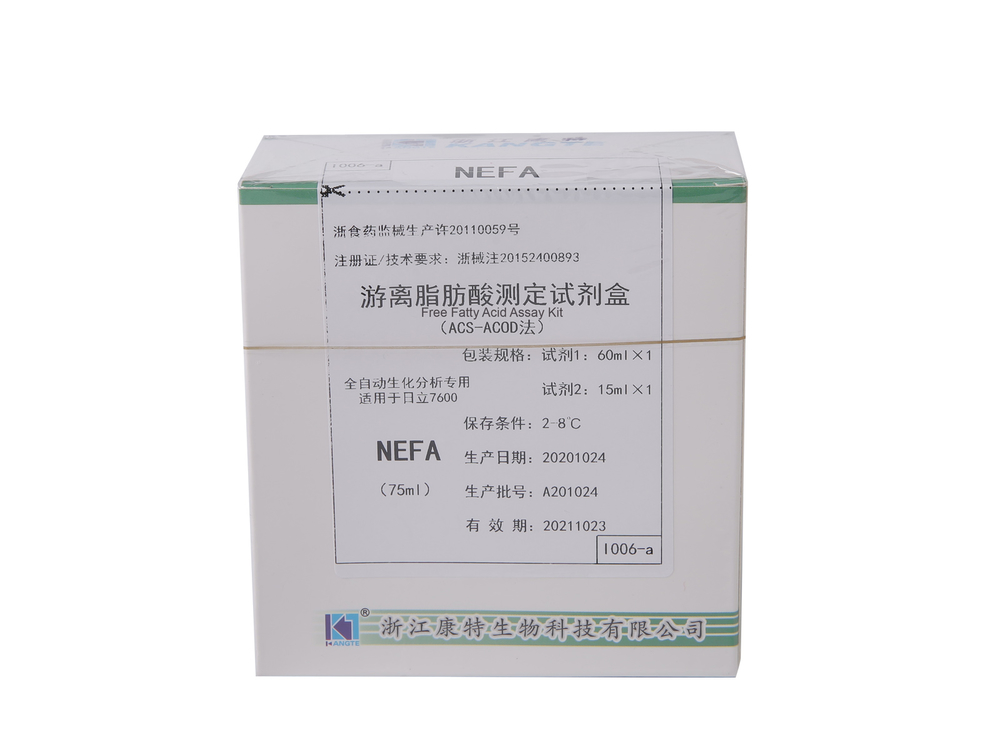Let us create a wonderful future together!
NEFA Assay Kit is a tool for the quantification of NEFA (Nitric Oxide). It is used to determine the concentration of NEFA in blood or tissue samples. NEFA is a vital nutrient that is responsible for the regulation of energy metabolism, cardiac excitability, neuromuscular conduction, blood pressure and blood clotting. It is mainly found in bone, muscle, soft tissues and red blood cells.
Preparation
NEFA is a small, 50.2 kDa protein that has the ability to bind to DNA. It is a cytosolic type I fatty acid synthase (FAS) complex that produces non-esterified palmitic acid. In the presence of Acyl-CoA oxidase (ACS), the FAS complex oxidizes 3-methyl-N-ethyl-N-(b-hydroxyethyl)-aniline to 4-aminoantipyrine, which is the molecular precursor for acetyl-CoA. This process is a crucial enzymatic process for all eukaryotic organisms.
Although NEFA may not have the hefty mass of a fat, it is an important fuel source for peripheral tissues. It is metabolized by the liver and is transported complexed with albumin to peripheral tissues. NEFA is also released by a thioesterase (TE) domain of the FAS complex.
Pipetting
ELISA kits are used to detect small chemical compounds, proteins and peptides. These kits are based on recombinant proteins expressed in E.coli. The kits do not contain azide, thimerosal, and other natural resources.
In the kit, there are reagents such as BSA, pyrogen-free dilution buffer and wash solution. The wash solution is stable for two weeks at 2-8degC. The dilution buffer contains 0.9% physiological saline.
The kit has an internal NEFA standard. This is spiked with NEFA at a concentration that matches the expected concentration in the sample. The absorbance of the blue-purple pigment at 546nm is measured to calculate the concentration of NEFA in the sample.
Colorimetric
Using the WAKO NEFA kit has elicited a variety of results, including some that are nonsensical. Nevertheless, the NEFA kit is a worthy contender when it comes to determining the relative fatty acid content of animal tissue samples. As such, the NEFA kit is one of the more popular laboratory tests. The kit comes with instructions for testing different types of samples, including blood, serum, saliva, and a variety of lipids.
The most exciting part of the kit is that it can be used to measure a variety of fatty acids, including those that are commonly found in lipids. The kit comes with a range of enzymes designed to detect a variety of fatty acids, including the C-8 and C-16 fatty acids found in humans and animals. Nevertheless, the kit is not recommended for use in high precision FFA concentrations over a wide range.
Electrochemical
NEFAs are important fatty acids in human health, but are rarely assessed. In addition, their detection is very expensive. Therefore, monitoring changes in their concentrations can help in more accurate disease prevention and management. In this study, an electrochemical assay kit for NEFA was developed, using PDA-MWCNT as the sensor surface. This electrode exhibited good electrocatalytic activity for NEFA oxidation steps, and could be used in real-life applications.
The enzyme electrode consisted of a multi-layer composite film of PDA-MWCNT and ACOD, ACS, and polymer. The order of the layers was chosen to match the enzymatic reaction order. It was determined that the ACS and ACOD remained biologically active in the film.
NEFA concentration in T2D

NEFA concentrations in the blood have been studied in the context of obesity and hypertension. These compounds have been shown to promote BP elevation through a1-adrenergic stimulation and increase oxidant stress. NEFAs are also associated with metabolic syndrome. These compounds may be important in the development of hypertension.
Several models have been proposed to describe the plasma NEFA response to an intravenous glucose challenge. The Boston model accurately portrayed the fourth phase of NEFA concentration increase. However, the model did not describe the initial latency phase. The Fabian model employed a simple exponential slope to describe this phase. Similarly, the Thomaseth model was not able to describe the rebound phase.
NEFA levels in triglycerides
Several studies have investigated the effects of bariatric surgery on plasma NEFA composition. In a meta-analysis published in 2016, serum NEFA levels were decreased at 6 and 12 months after surgery. This may have been due to reduced insulin levels. In another study, plasma NEFAs were measured in a group of obese patients before and after Roux-en-Y gastric bypass surgery.
The concentrations of seven NEFAs were decreased at 9 months after surgery. Linoleate (an omega-6 fatty acid) was reduced by 18:2, stearate by 18:0, and oleate by 16:0. The concentration of docosahexaenoate, however, was not affected. NEFAs were converted to fatty acid methyl esters (FAMEs). These were then analysed by gas chromatography-mass spectrometry (GC-MS).



